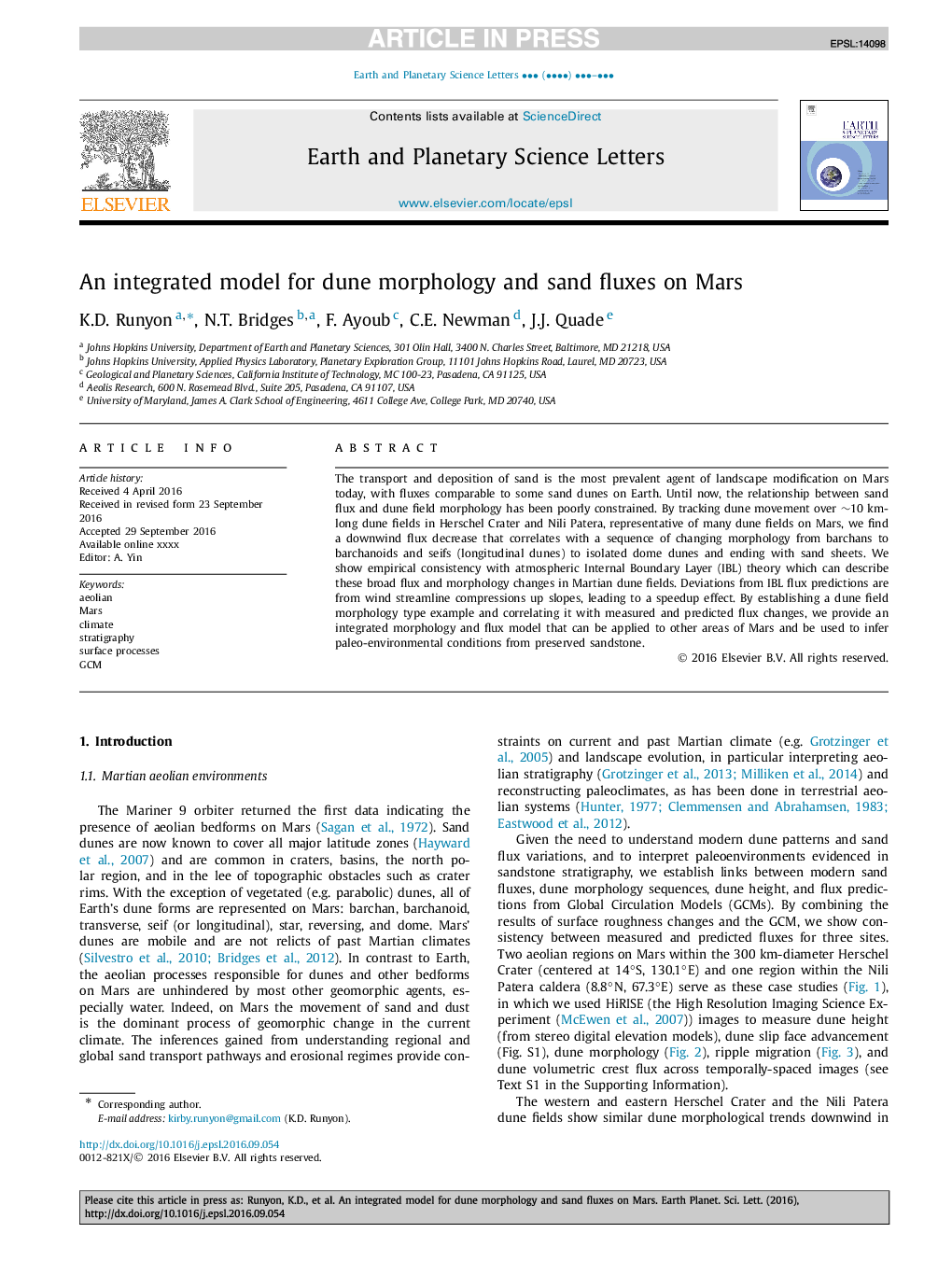| Article ID | Journal | Published Year | Pages | File Type |
|---|---|---|---|---|
| 5780060 | Earth and Planetary Science Letters | 2017 | 9 Pages |
Abstract
The transport and deposition of sand is the most prevalent agent of landscape modification on Mars today, with fluxes comparable to some sand dunes on Earth. Until now, the relationship between sand flux and dune field morphology has been poorly constrained. By tracking dune movement over â¼10 km-long dune fields in Herschel Crater and Nili Patera, representative of many dune fields on Mars, we find a downwind flux decrease that correlates with a sequence of changing morphology from barchans to barchanoids and seifs (longitudinal dunes) to isolated dome dunes and ending with sand sheets. We show empirical consistency with atmospheric Internal Boundary Layer (IBL) theory which can describe these broad flux and morphology changes in Martian dune fields. Deviations from IBL flux predictions are from wind streamline compressions up slopes, leading to a speedup effect. By establishing a dune field morphology type example and correlating it with measured and predicted flux changes, we provide an integrated morphology and flux model that can be applied to other areas of Mars and be used to infer paleo-environmental conditions from preserved sandstone.
Related Topics
Physical Sciences and Engineering
Earth and Planetary Sciences
Earth and Planetary Sciences (General)
Authors
K.D. Runyon, N.T. Bridges, F. Ayoub, C.E. Newman, J.J. Quade,
